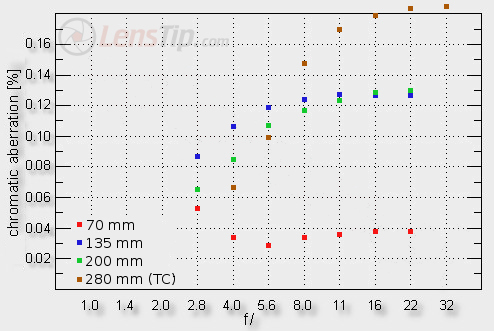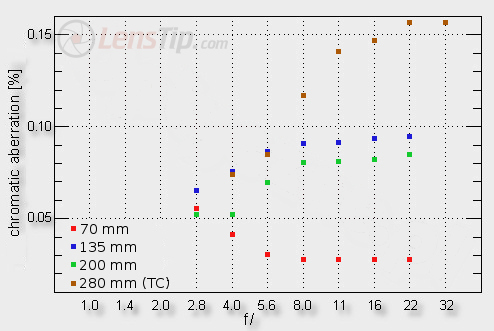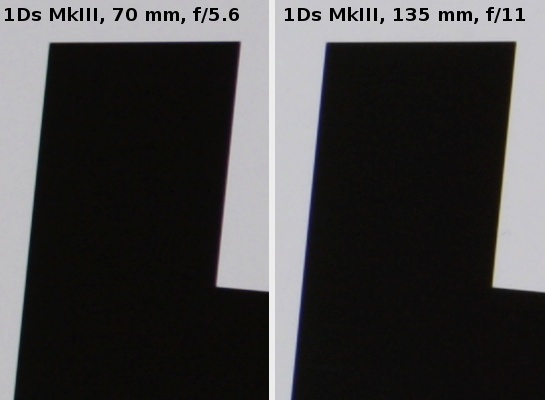Sigma 70-200 mm f/2.8 EX DG APO OS HSM
5. Chromatic aberration

At 70 mm there are no problems at all. At longer focal lengths a very good situation can be noticed by f/2.8 and f/4.0, the most often used apertures in this type of lenses. From f/5.6 the aberration becomes visible and by f/8.0 it even approaches high level.
Please Support UsIf you enjoy our reviews and articles, and you want us to continue our work please, support our website by donating through PayPal. The funds are going to be used for paying our editorial team, renting servers, and equipping our testing studio; only that way we will be able to continue providing you interesting content for free. |
- - - - - - - - - - - - - - - - - - - - - - - - - - - - - - - - - - - - - - - - - - - - - - - -
A bit better situation is on the edge of full frame – you can see it presented on the graph below.

Contrary to appearances it is not a paradox. Nobody said the aberration must increase with passing to the edge of the frame. Overall the graph of this aberration’s level can be much more complicated – especially if you deal with optically advanced zoom lenses to which category the tested Sigma certainly belongs. The kind of measurement units, adopted in a test, influences the result as well. If you want to express the aberration in pixels, the cameras with smaller cells would be disadvantaged. Our method consists of calculate percentage values which are obtained by dividing the aberration measurement result in pixels by the size of the frame, also in pixels. This way our results are independent from the pixels’ size but, as full frame measurements are divided by a higher number, in effect they produce lower percentage results.
Returning to the topic: the Sigma’s aberration on full frame doesn’t exceed 0.1% anywhere so it is not a big problem. When you use the converter, though, the matter looks different. By f/4.0 and f/5.6 it is still decent because the aberration doesn’t exceed 0.1% on the APS-C/DX sensor’s edge and FF. However, on further stopping down we witness a sudden outburst of chromatic aberration, increasing to even a very high level. Such is the fate of converters…
It’s also worth adding that the Sigma, tested here, although relatively very fast, doesn’t have any problems with correcting the longitudinal chromatic aberration. You can see it very well in the photos of our autofocus accuracy testing charts, presented in chapter 10.
 |






